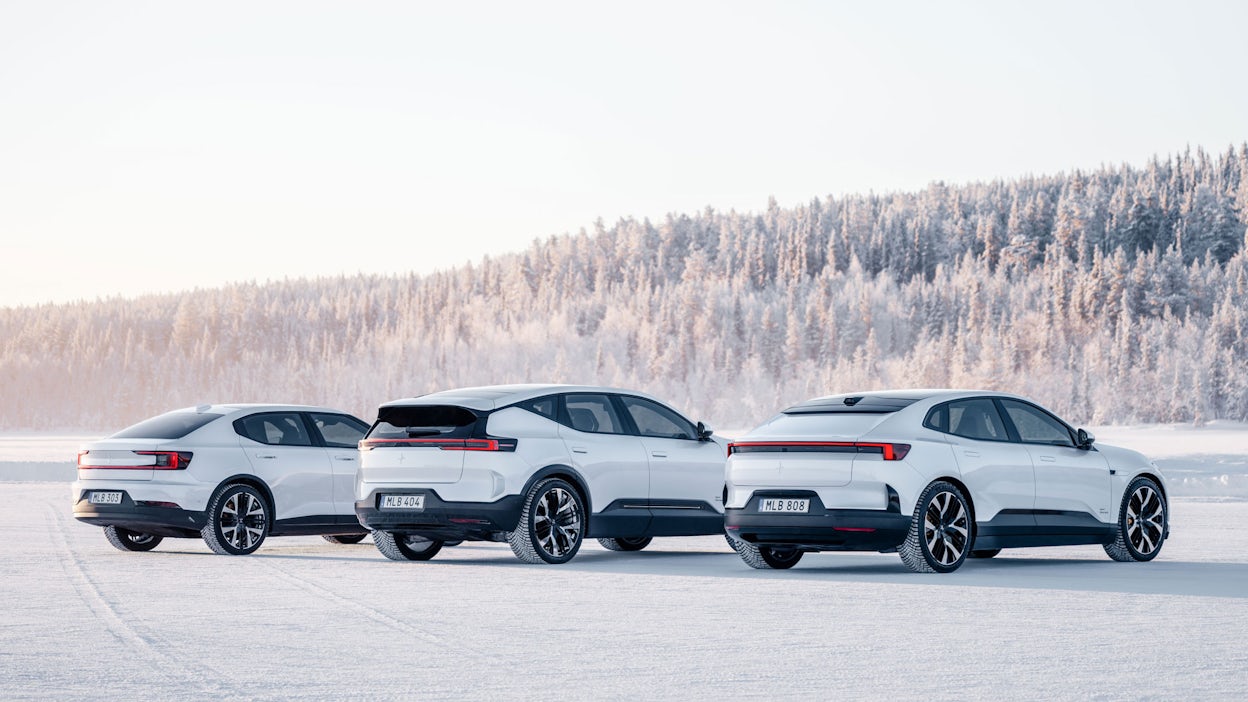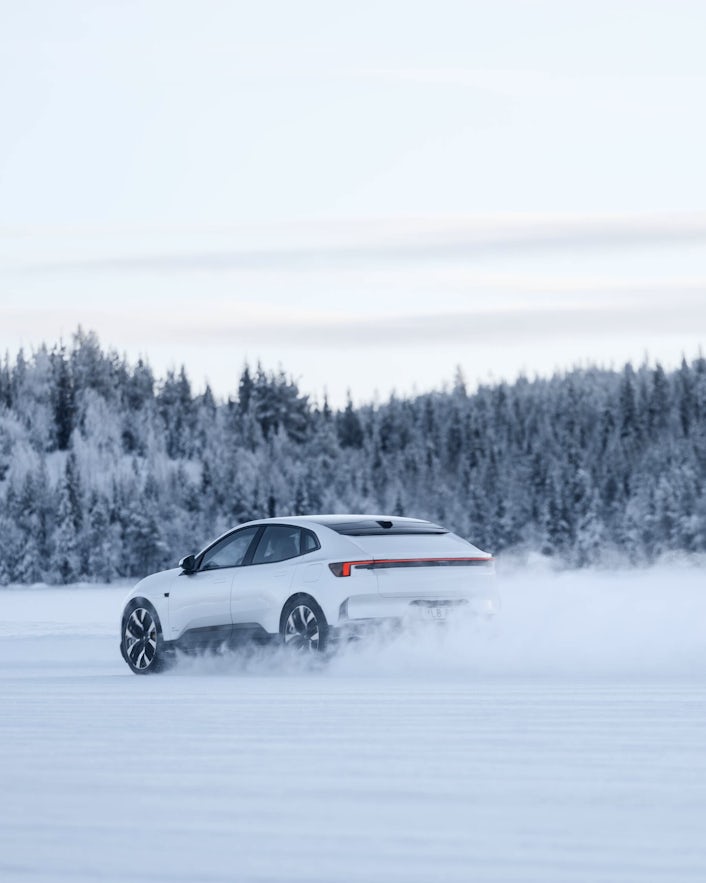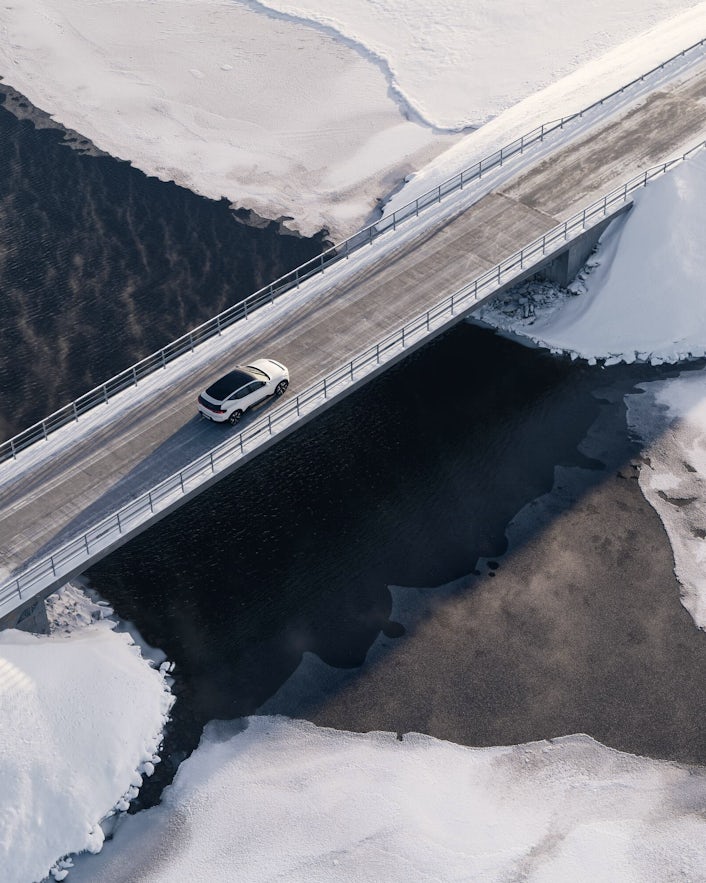Driving an EV in cold weather: a how-to guide
Engineered in Sweden and tested in the harshest of winter conditions, snow and ice is a familiar setting for us. In this article, we will give you tips on how to maximise the range and performance of your Polestar during the winter months.

Are you a winter person or a summer person? Some of us love the weather-imposed cosiness where you are snuggled up under a blanket, while others dread the cold and the long winter nights. But regardless of how you feel about it, you must be ready for it. Because winter is coming. These tips will maximise your range, optimise your performance, and keep you safe when the temperature drops, and the snow starts falling.The main reason EVs are affected by the cold is due to the temperature of the battery. If the temperature is too low, the electrochemical processes in the battery will slow down, which will affect both charging speed and range. In addition, heating the car’s cabin to a comfortable temperature requires more energy than it would in the summer. Therefore, your guiding mantra through the winter months should be to keep you and your battery warm. And this is how it’s done.


Preheat your car
Polestar, and most other EVs, have a preconditioning function. As the name suggests, this allows you to preheat your car before you drive it. Other than providing you with a warm car, it saves you range as you won’t have to do it while you are driving. If you schedule the preconditioning your battery will also have time to warm up and be at a more optimal temperature when you set off. Speaking of warmth, try to keep your car in a garage or at least cover it with a tarp or frost cover. This will save you some extra energy when warming up the car.
Your Polestar has two distinct tools to help you tackle the cold a bit better. The first is our snowflake, which appears next to the battery on your display. When this symbol appears, your battery is too cold to use all its available energy. However, as you start driving, and the battery warms up, the symbol will disappear, and you will be back to 100% performance. Secondly, your Polestar is equipped with a special heat pump. This equipment is a more effective heating system that controls your cabin temperature and uses less energy. This is not to say that the standard-equipped Polestar does not have heating. It’s simply a more premium piece of technology in the performance pack, that will extend your range during colder months.
Drive efficiently
Range aside, when the roads get icy and the snow starts falling, safety is your first priority. The good news is that the safest way to drive during the winter is also the one that helps maximise your range.Remember to avoid accelerating and braking quickly. Your wheels have less traction on snow and ice, meaning that quick acceleration and braking could result in the car skidding. At the same time, by braking gently and maintaining a steady speed, you use less of your battery charge. But if you are just going out for a joy ride and not worried about maximising your range, your Polestar is fully capable to take on the snow with speed.
Also, using your car’s Eco-mode will allow your car to make extra adjustments to increase your range. We recommend activating eco climate and using eco tire pressure to maximise the range of your car. It’s also worth noting that using the heated seats and steering wheel can keep you warm during a shorter trip where you can turn down the cabin temperature and still feel comfortable.

Keep your battery charged
If you are on a longer drive where you need to stop and charge, make sure to add a fast charger as a waypoint in your navigation system. Your Polestar will then make sure to heat the battery to the optimal level for charging by the time you arrive. This allows for quicker and more efficient charging.
You should also avoid completely running the battery down by keeping it at least above 20 percent. If you must leave your car in the cold, make sure it is sufficiently charged before. This ensures that you have enough charge to heat the vehicle again and give you the needed range.
Keep informed and stay ready
Your comfort when driving during the winter hinges on your preparations. We hope this guide has prepared you to take on the winter with zero degrees, zero emissions, and zero worries.









